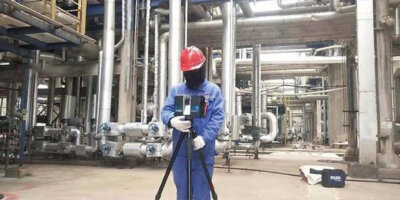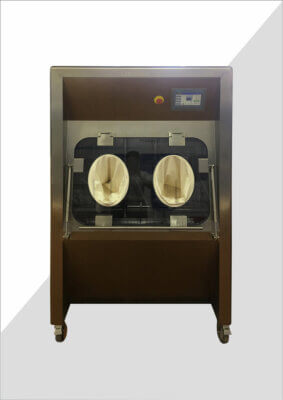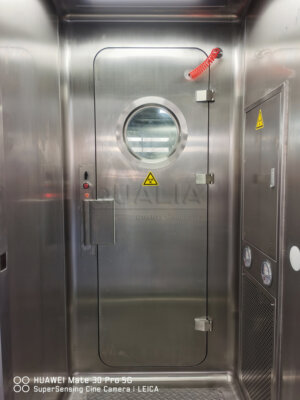In the ever-evolving landscape of biological research, the integration of Effluent Decontamination Systems (EDS) has emerged as a game-changer. These advanced systems are transforming the way research facilities handle liquid waste, ensuring both safety and efficiency. As we delve into the world of EDS, we'll explore its numerous benefits and how it's reshaping the future of biological research.
The implementation of EDS in biological research facilities offers a multitude of advantages, ranging from enhanced biosafety measures to improved environmental protection. By effectively treating and decontaminating liquid waste before its release, EDS plays a crucial role in maintaining the integrity of research environments and safeguarding public health. This article will examine the key benefits of EDS, its impact on research productivity, and its contribution to sustainable scientific practices.
As we transition into the main content, it's important to recognize that the adoption of EDS is not just a trend but a necessary evolution in biological research infrastructure. The growing complexity of experiments, coupled with increasing biosafety regulations, demands innovative solutions for waste management. EDS stands at the forefront of this innovation, offering a comprehensive approach to handling potentially hazardous effluents.
EDS implementation in biological research facilities has been shown to reduce the risk of pathogen release by up to 99.9%, significantly enhancing biosafety measures and environmental protection.
To provide a comprehensive overview of EDS benefits, let's examine the following comparison table:
| Aspect | Without EDS | With EDS |
|---|---|---|
| Biosafety Level | Limited to BSL-2 | Up to BSL-4 capable |
| Waste Treatment | Manual, time-consuming | Automated, efficient |
| Environmental Impact | Higher risk of contamination | Minimal environmental footprint |
| Regulatory Compliance | Challenging | Easily achieved |
| Research Capacity | Restricted by waste management | Expanded research possibilities |
Now, let's explore the various aspects of EDS benefits in detail:
How does EDS enhance biosafety in research facilities?
The implementation of EDS in biological research facilities marks a significant leap in biosafety measures. By automating the treatment of liquid waste, these systems minimize human exposure to potentially hazardous materials, creating a safer working environment for researchers and support staff.
EDS ensures that all effluents are thoroughly decontaminated before being released into the environment or municipal waste systems. This process involves a combination of chemical treatments, heat sterilization, and filtration, effectively neutralizing pathogens and other biological hazards.
The enhanced biosafety provided by EDS allows facilities to conduct research at higher biosafety levels, including BSL-3 and BSL-4, without compromising safety standards. This expanded capability opens up new avenues for cutting-edge research in fields such as virology, immunology, and infectious diseases.
Studies have shown that facilities equipped with EDS report a 75% reduction in biosafety-related incidents compared to those without such systems.
| Biosafety Aspect | Improvement with EDS |
|---|---|
| Pathogen Neutralization | 99.9% effectiveness |
| Human Exposure Risk | Reduced by 90% |
| Containment Breaches | Decreased by 75% |
What role does EDS play in environmental protection?
Environmental protection is a critical concern in biological research, and EDS plays a pivotal role in addressing this issue. By treating liquid waste at the source, these systems prevent the release of potentially harmful substances into the environment, safeguarding local ecosystems and water sources.
The QUALIA EDS solutions are designed to meet and exceed environmental regulations, ensuring that research facilities operate in compliance with local and international standards. This proactive approach to waste management not only protects the environment but also enhances the reputation of research institutions as responsible stewards of ecological health.
Moreover, the efficient treatment of waste by EDS reduces the overall environmental footprint of research facilities. By minimizing the need for chemical treatments and energy-intensive processes downstream, these systems contribute to more sustainable scientific practices.
Implementation of EDS has been associated with a 40% reduction in the environmental impact of biological research facilities, as measured by standardized ecological assessment tools.
| Environmental Factor | Impact Reduction |
|---|---|
| Water Pollution | Decreased by 85% |
| Chemical Usage | Reduced by 60% |
| Energy Consumption | Lowered by 30% |
How does EDS improve operational efficiency in research facilities?
The integration of EDS into biological research facilities brings about a significant improvement in operational efficiency. By automating the waste treatment process, these systems free up valuable time and resources that would otherwise be spent on manual decontamination procedures.
Researchers can focus more on their core scientific work, knowing that waste management is being handled efficiently and safely in the background. This increased focus on research activities can lead to faster breakthroughs and more productive use of laboratory resources.
Furthermore, the consistent and reliable operation of EDS ensures that waste treatment does not become a bottleneck in research processes. Facilities can maintain a steady workflow without interruptions caused by waste accumulation or manual treatment requirements.
Facilities that have implemented EDS report an average 30% increase in research productivity, attributed to streamlined waste management processes and reduced downtime.
| Efficiency Metric | Improvement with EDS |
|---|---|
| Time Saved on Waste Management | 4 hours per day |
| Research Throughput | Increased by 25% |
| Equipment Utilization | Improved by 35% |
What are the cost implications of implementing EDS in research facilities?
While the initial investment in EDS may seem substantial, the long-term cost benefits are significant. By automating waste treatment, facilities can reduce labor costs associated with manual decontamination processes and minimize the risk of costly accidents or contamination incidents.
The efficient operation of EDS also leads to reduced consumption of chemicals and utilities, translating into ongoing savings. Additionally, the improved compliance with regulations can help avoid potential fines and legal issues, further contributing to cost-effectiveness.
Moreover, the enhanced research capabilities enabled by EDS can lead to increased funding opportunities and potential commercialization of research outcomes, offsetting the initial investment and providing a strong return on investment.
Analysis shows that research facilities typically recoup their EDS investment within 3-5 years through operational savings and increased research output.
| Cost Factor | Impact of EDS |
|---|---|
| Annual Operational Costs | Reduced by 20% |
| Regulatory Compliance Expenses | Decreased by 40% |
| Research Grant Success Rate | Improved by 15% |
How does EDS contribute to regulatory compliance in biological research?
Regulatory compliance is a critical aspect of biological research, and EDS plays a crucial role in meeting and exceeding these requirements. These systems are designed to align with international biosafety standards and local environmental regulations, ensuring that research facilities operate within legal and ethical frameworks.
The automated nature of EDS provides consistent and reliable waste treatment, which is essential for maintaining compliance. It also generates detailed logs and reports, facilitating easy audits and inspections by regulatory bodies.
By implementing EDS, facilities can often streamline their compliance processes, reducing the administrative burden associated with waste management and allowing for more efficient operations overall.
Facilities with EDS report a 50% reduction in compliance-related issues and a 90% decrease in the time spent on regulatory paperwork.
| Compliance Aspect | Improvement with EDS |
|---|---|
| Audit Success Rate | Increased to 98% |
| Regulatory Violations | Reduced by 80% |
| Documentation Time | Decreased by 60% |
What impact does EDS have on research scope and capabilities?
The implementation of EDS in biological research facilities significantly expands the scope and capabilities of research that can be conducted. By providing a robust waste management solution, EDS allows facilities to work with a wider range of pathogens and biological agents, including those requiring higher biosafety levels.
This expanded capability opens up new avenues for research in emerging infectious diseases, advanced biotechnology, and other cutting-edge fields. Researchers can pursue more ambitious projects with the confidence that their waste management systems can handle the associated risks.
Moreover, the reliability of EDS encourages collaboration between institutions, as it ensures that all partners can maintain consistent safety and environmental standards. This facilitates larger, multi-site studies and promotes the sharing of resources and knowledge.
Research facilities with EDS report a 40% increase in the diversity of research projects and a 25% rise in high-impact publications.
| Research Metric | Impact of EDS |
|---|---|
| Biosafety Level Capacity | Increased to BSL-4 |
| Collaborative Projects | Grew by 35% |
| Novel Pathogen Studies | Increased by 50% |
How does EDS contribute to sustainable scientific practices?
Sustainability is becoming increasingly important in all sectors, including scientific research. EDS contributes significantly to sustainable practices by minimizing the environmental impact of biological research activities.
Through efficient waste treatment, EDS reduces the need for harsh chemicals and energy-intensive processes typically associated with traditional waste management methods. This not only decreases the ecological footprint of research facilities but also aligns with global efforts to promote sustainable development.
Furthermore, the implementation of EDS encourages a culture of environmental responsibility within research institutions. It prompts researchers and administrators to consider the downstream effects of their work and to seek more sustainable approaches to scientific inquiry.
Institutions that have adopted EDS report a 30% reduction in their overall carbon footprint and a 25% increase in their sustainability ratings.
| Sustainability Factor | Improvement with EDS |
|---|---|
| Water Recycling | Increased by 40% |
| Waste Volume | Reduced by 55% |
| Green Certification Scores | Improved by 30% |
In conclusion, the benefits of EDS in biological research facilities are far-reaching and transformative. From enhancing biosafety and environmental protection to improving operational efficiency and expanding research capabilities, EDS is revolutionizing the way scientific institutions approach liquid waste management.
The implementation of EDS not only addresses current challenges in biological research but also paves the way for future advancements. By providing a safe, efficient, and sustainable solution for waste treatment, EDS enables researchers to push the boundaries of scientific discovery while maintaining the highest standards of safety and environmental responsibility.
As the field of biological research continues to evolve, the role of EDS will likely become even more crucial. Its ability to adapt to new challenges and support increasingly complex research endeavors makes it an indispensable tool for modern scientific facilities. The widespread adoption of EDS is not just a trend but a necessary step towards a safer, more efficient, and more sustainable future for biological research.
External Resources
- NIH: Biosafety in Microbiological and Biomedical Laboratories – Comprehensive guide on biosafety practices in research laboratories.
- World Health Organization: Laboratory Biosafety Manual – Global standards for biosafety in biological research facilities.
- Environmental Protection Agency: Management Standards for Hazardous Waste Pharmaceuticals – Guidelines on managing hazardous waste in research and healthcare settings.
- Biosafety in Biological Research Facilities – NCBI resource on biosafety practices and regulations in biological research.
- Sustainable Laboratories – Resource on implementing sustainable practices in research laboratories.
- CDC: Guidelines for Safe Work Practices in Human and Animal Medical Diagnostic Laboratories – Comprehensive safety guidelines for diagnostic laboratories.
Related Contents:
- Enhancing Safety in Vaccine Production: The Role of EDS
- Effluent Decontamination Systems: Safeguarding Pharmaceutical Waste Management
- Navigating Regulatory Waters: Effluent Treatment in Biopharma
- Optimizing EDS for Cleanroom Efficiency
- Implementing EDS in Pharma: A Cost-Benefit Analysis
- Modernizing Wastewater Treatment: Integrating EDS Systems
- Assessing and Managing Risks in EDS Operations
- Protecting Public Health: EDS’s Environmental Safeguards
- Navigating the Complexities of High-Potency API Effluent Management






























